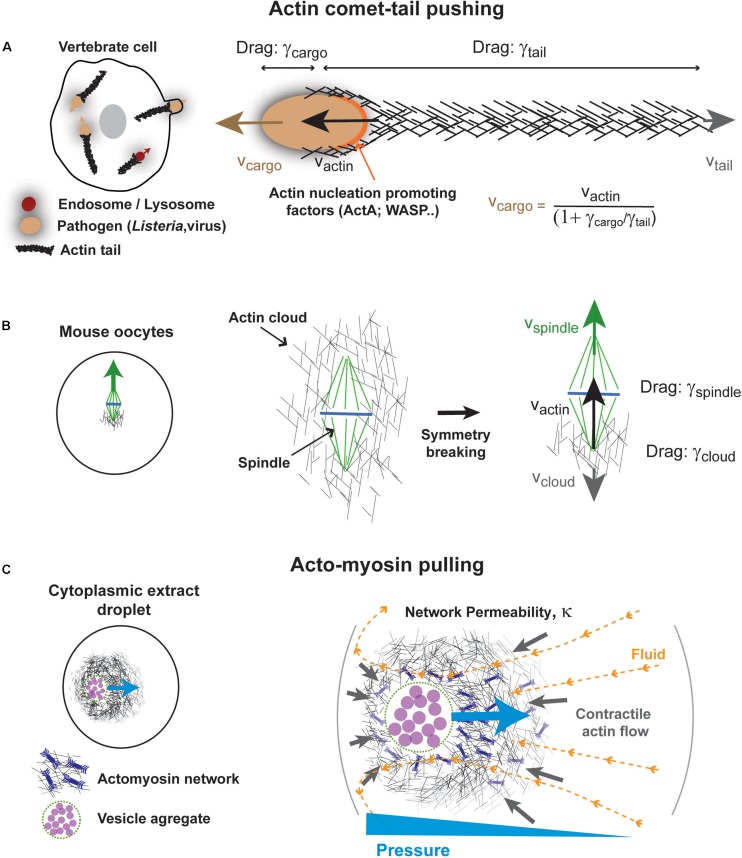FIGURE 4.
Some mechanisms for actin-based force exertion in bulk. (A) Actin comet tail model for actin based cytoplasmic pushing. Comet tails grow at the surface of different microbes, such as Listeria monocytogenes, or even at the surface of intracellular vesicles. Actin polymerization promoted by local actin regulators such as ActA for Listeria and Wasp for lysosomes promotes the growth of a branched actin network, by activating host arp2/3 complex. Assuming pure viscous interactions of both cargos and tails with the cytoplasm, the propulsive speed of the cargo is linked to that of actin growth speed by their drag ratio as indicated. (B) Meiotic spindle asymmetric displacement in mouse oocytes. An actin cloud forms around spindle and chromosomes as a result of formin-nucleation activity around spindles or chromosomes. This cloud breaks symmetry and pushes the spindle upward invoking similar physical principles as for comet-tails. Modified from Li et al. (2008). (C) Self-organized acto-myosin contractile networks in extracts encapsulated in droplets can drive actin and fluid flows. Darcy flows through the permeable network create a pressure gradient that pushes the network toward the cell center. Modified from Ierushalmi et al. (2019).

